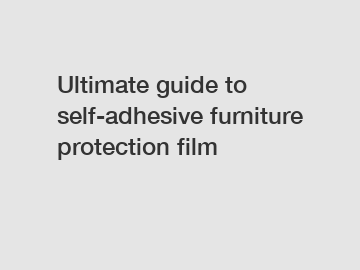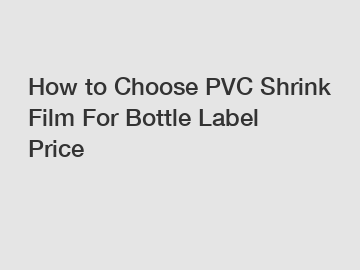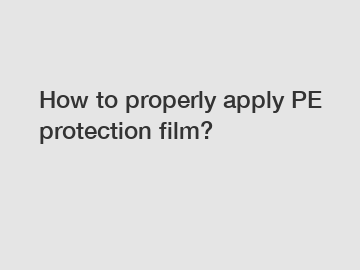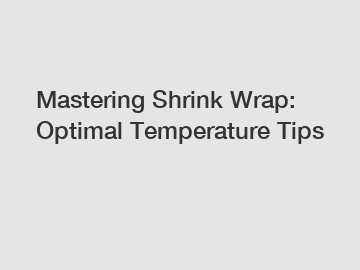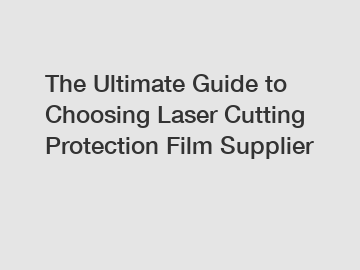7 Game-Changing Tips for Shrink Film Wrap
HYF contains other products and information you need, so please check it out.
Shrink film wrap is a versatile packaging material that can be used in various industries. Whether you are a manufacturer, distributor, or retailer, using shrink film wrap can be a game-changer for your packaging needs. In this article, we will discuss 7 game-changing tips for using shrink film wrap effectively.
1. Choose the Right Shrink Film.

When it comes to shrink film wrap, one size does not fit all. It is essential to choose the right shrink film based on your product size, shape, and weight. Different shrink films have different shrink ratios, thickness, and properties. Consulting with a shrink film supplier can help you determine the best shrink film for your specific needs.
2. Use a High-Quality Heat Gun.
A high-quality heat gun is crucial for a successful shrink wrapping process. A good heat gun will provide even heat distribution, which is essential for achieving a uniform shrink on the film. Investing in a reliable heat gun can save you time and money in the long run.
3. Pre-Shrink Your Film.
Pre-shrinking your film before applying it to your product can prevent wrinkles and air bubbles. Simply passing the film through a heat tunnel or using a heat gun to pre-shrink the film will ensure a smooth finish when you apply it to your product.
4. Use Properly Sized Film.
See also:Unleashing the Benefits of PETG: A Game-Changer?
The Booming Market for Custom Shrink Sleeves
Ultimate Guide to Petg Sleeving for Beginners
Is Bakery PLA Flexible Film the Future of Eco-Friendly Packaging?
1. Unleashing the Power of Heat Shrinkable Film2. 5 Ways Heat Shrinkable Film Boosts Packaging Efficiency3. The Secret Behind Heat Shrinkable Film Revealed4. How to Choose the Best Heat Shrinkable Fil
The Ultimate Guide to PLA Shrinkable Film
How Does 3D printing technology Work?
Using the right size of shrink film wrap is crucial for achieving a professional-looking finish. A film that is too small will not fully cover your product, while a film that is too large will leave excess material that can become a tripping hazard or be unsightly. Measure your product accurately and choose the right size of film accordingly.
5. Don't Overheat the Film.
Overheating the film can result in a poor-quality finish and can damage your product. It is essential to follow the recommended temperature guidelines provided by the shrink film manufacturer. Overheating can cause the film to burn or shrink unevenly, affecting the overall appearance of your product.
6. Secure the Ends Properly.
Properly securing the ends of your shrink film wrap is essential for keeping your product secure during transit and storage. Using a heat sealer or tape to secure the ends will prevent the film from unraveling and protect your product from damage.
7. Label Your Products Before Shrink Wrapping.
Applying labels to your products before shrink wrapping can save you time and effort in the long run. Labels can be difficult to apply to shrink film wrap, so applying them before shrink wrapping can ensure they stay in place and are easily visible to your customers.
In conclusion, using shrink film wrap can be a game-changer for your packaging needs. By following these 7 game-changing tips, you can achieve a professional-looking finish and protect your products during transit and storage. If you need assistance with shrink film wrap, don't hesitate to contact us. Our experienced team can help you choose the right shrink film for your needs and provide expert advice on proper shrink wrapping techniques.
For more Food PVC Shrink Film Manufacturerinformation, please contact us. We will provide professional answers.
See also:Komelon Stainless Steel Gripper Tape Measure
3 Common Questions About Shrink Sleeve Labeling
How to Choose Sustainable Environmental RPETG Shrink Film
How to Choose Petg Shrink Film Properties? A Comprehensive Guide for Pet Owners
- What are the best stretch film raw materials?
What Are the Advantages of low shrink force?
Exploring the Benefits of Using PETG: Advantages and Disadvantages


